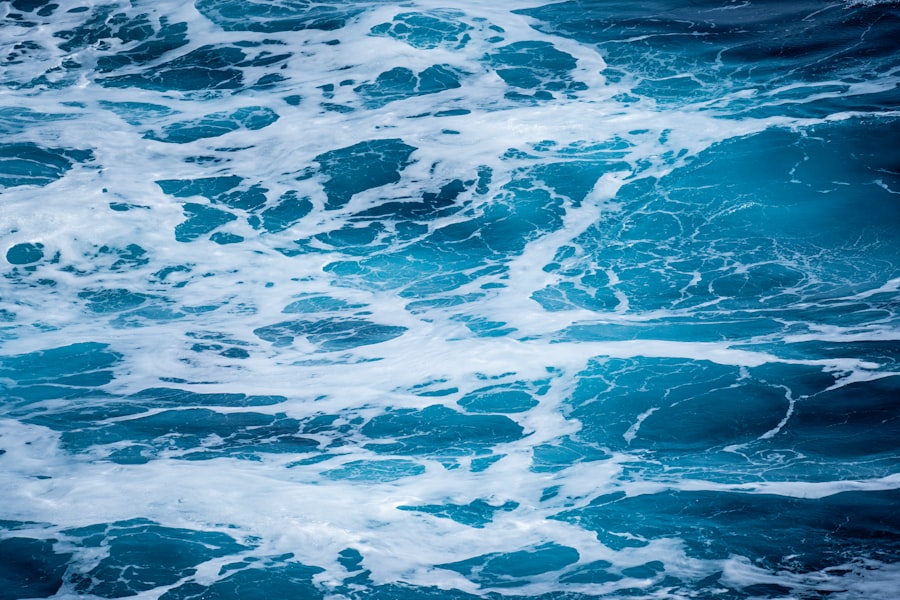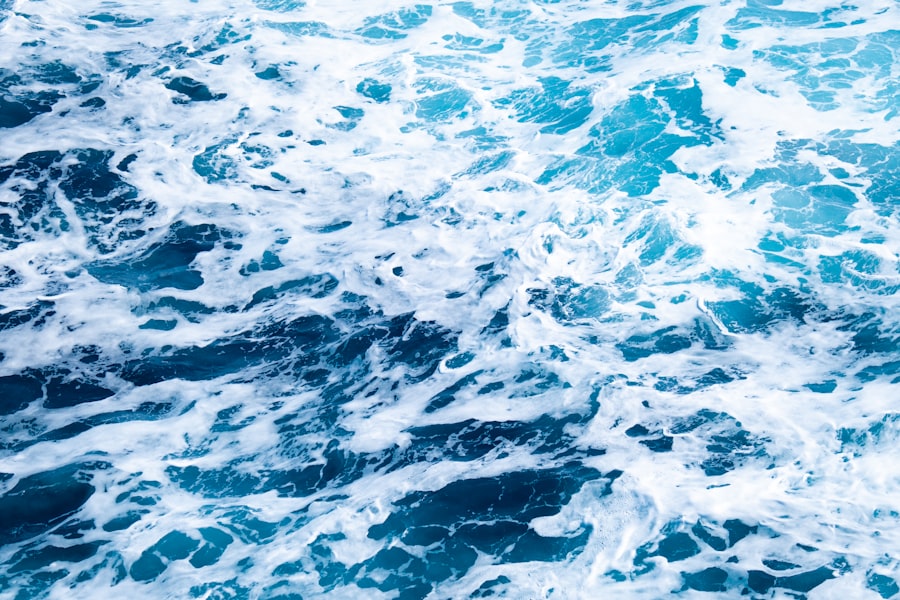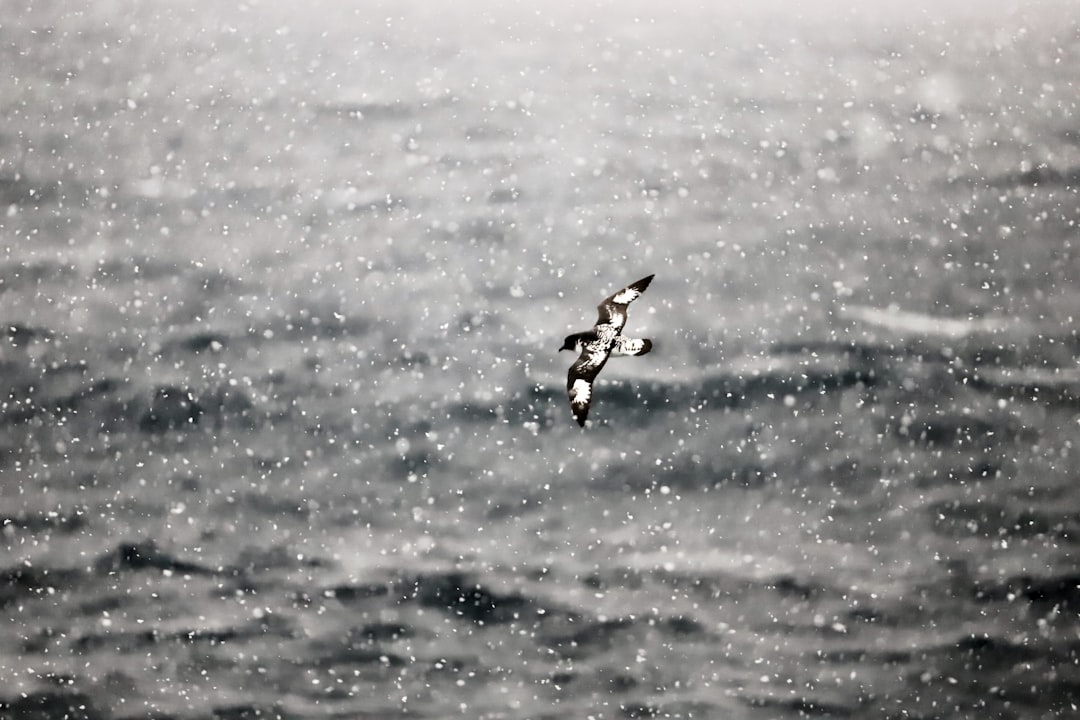The Scotia Sea and the Drake Passage are two significant bodies of water located at the southernmost reaches of the Earth, serving as critical junctions between the Atlantic and Pacific Oceans. These regions are not only vital for global oceanic circulation but also play a crucial role in the climate and ecology of the surrounding areas. The Scotia Sea, situated to the north of Antarctica, is characterized by its unique marine ecosystems and diverse wildlife, while the Drake Passage, lying to the south, is notorious for its turbulent waters and challenging navigation.
Together, they form a complex maritime environment that has fascinated explorers, scientists, and adventurers alike. The importance of these waters extends beyond their geographical features; they are also steeped in history and exploration. The Drake Passage, named after the English sea captain Sir Francis Drake, has long been a route for maritime expeditions seeking to navigate between the Atlantic and Pacific Oceans.
Meanwhile, the Scotia Sea has been a focal point for scientific research, particularly in understanding climate change and its impact on marine life. As such, both regions are not only significant for their natural characteristics but also for their contributions to human knowledge and exploration.
Key Takeaways
- The Scotia Sea and Drake Passage are two important bodies of water in the Southern Ocean, connecting the Atlantic, Pacific, and Southern Oceans.
- The Scotia Sea is located between the tip of South America and the Antarctic Peninsula, characterized by deep ocean basins and a complex seafloor topography.
- The Drake Passage is a narrow stretch of water between South America’s Cape Horn and the South Shetland Islands of Antarctica, known for its strong winds and rough seas.
- The Scotia Sea experiences a cold, polar climate with strong westerly winds and frequent storms, making it a challenging environment for navigation.
- The Drake Passage is notorious for its unpredictable weather, including high winds, large waves, and rapidly changing conditions, posing significant navigational challenges.
Geographic Location and Characteristics of the Scotia Sea
The Scotia Sea is located between the southern tip of South America and the northern edge of Antarctica, bordered by the South Shetland Islands to the north and the South Orkney Islands to the east.
Its unique topography contributes to a variety of marine habitats, making it a hotspot for biodiversity. One of the defining features of the Scotia Sea is its complex ocean currents, which are influenced by the Antarctic Circumpolar Current. This current flows from west to east around Antarctica and plays a crucial role in regulating global climate patterns.
The interaction between these currents and the sea’s geographical features creates a dynamic environment that supports a rich array of marine life. The Scotia Sea is also known for its cold waters, which are rich in nutrients, fostering phytoplankton blooms that serve as the foundation of the marine food web.
Geographic Location and Characteristics of the Drake Passage

The Drake Passage lies directly south of South America, connecting the Atlantic Ocean to the Pacific Ocean. It is flanked by Cape Horn to the south and the Antarctic Peninsula to the north. This narrow body of water is approximately 800 kilometers wide at its widest point and is known for its deep waters that plunge to depths exceeding 5,000 meters.
The passage serves as a critical conduit for oceanic currents and plays a significant role in global ocean circulation. The Drake Passage is infamous for its rough seas and unpredictable weather conditions, making it one of the most challenging maritime routes in the world. The convergence of cold Antarctic waters with warmer currents from the north creates turbulent conditions that can lead to high waves and strong winds.
This unique geographical setting not only influences navigation but also impacts marine ecosystems in both the Atlantic and Pacific Oceans. The passage’s depth and currents contribute to a rich diversity of marine life, making it an area of interest for researchers studying oceanography and marine biology.
Climate and Weather Patterns in the Scotia Sea
| Month | Average Temperature (°C) | Precipitation (mm) | Wind Speed (km/h) |
|---|---|---|---|
| January | 5 | 80 | 30 |
| February | 4 | 90 | 35 |
| March | 3 | 100 | 40 |
| April | 2 | 110 | 45 |
| May | 1 | 120 | 50 |
The climate of the Scotia Sea is predominantly influenced by its proximity to Antarctica, resulting in cold temperatures year-round. The sea experiences a polar maritime climate characterized by cool summers and frigid winters. Average sea surface temperatures range from about -2°C in winter to 5°C in summer, creating an environment that supports unique marine ecosystems.
The cold waters are rich in nutrients, which promote high productivity levels among phytoplankton and zooplankton. Weather patterns in the Scotia Sea can be highly variable due to its location at the convergence of different air masses. Storm systems frequently develop in this region, leading to strong winds and rough seas.
Precipitation is common, often falling as snow during winter months. These weather conditions can significantly impact navigation and marine activities in the area. Despite these challenges, the Scotia Sea’s climate supports a diverse range of wildlife, including various species of seals, penguins, and seabirds that have adapted to thrive in this harsh environment.
Climate and Weather Patterns in the Drake Passage
The climate within the Drake Passage is similarly influenced by its geographical position near Antarctica. It experiences a polar maritime climate with cold temperatures prevailing throughout most of the year. The passage is notorious for its rapidly changing weather conditions, which can shift from calm to stormy within a matter of hours.
Average temperatures range from -1°C in winter to around 6°C in summer, with strong winds often exacerbating the chill. The weather patterns in the Drake Passage are heavily influenced by the interaction between warm air masses from the north and cold air from Antarctica. This dynamic creates frequent storms that can lead to high waves and turbulent seas, making navigation particularly challenging for vessels traversing this route.
The passage’s reputation for rough weather has earned it a place in maritime lore, with many sailors recounting tales of their experiences battling fierce storms while crossing these treacherous waters.
Wildlife and Marine Life in the Scotia Sea

The Scotia Sea is home to an impressive array of wildlife and marine life, making it one of the most biodiverse regions in the Southern Ocean. The nutrient-rich waters support large populations of krill, which serve as a primary food source for many species in this ecosystem. These small crustaceans are vital for sustaining larger marine animals such as seals, whales, and seabirds that inhabit the area.
Among the notable wildlife found in the Scotia Sea are various species of penguins, including Adélie, Gentoo, and Chinstrap penguins. These birds thrive on the abundant food supply provided by krill and other marine organisms. Additionally, several species of seals, such as Weddell seals and leopard seals, can be spotted lounging on ice floes or hunting in the frigid waters.
The presence of these animals highlights the ecological significance of the Scotia Sea as a critical habitat for marine life.
Wildlife and Marine Life in the Drake Passage
The Drake Passage is equally rich in wildlife and marine life, serving as a migratory route for numerous species that travel between the Atlantic and Pacific Oceans. The nutrient upwelling caused by ocean currents creates an environment conducive to supporting diverse marine ecosystems. This area is particularly known for its populations of seabirds, including albatrosses and petrels, which can often be seen gliding gracefully over the waves.
Marine mammals are also prevalent in the Drake Passage, with various species of whales frequently sighted during migration periods. Humpback whales, orcas, and minke whales are among those that traverse these waters in search of food. The passage’s unique ecological characteristics make it an important area for researchers studying marine biology and conservation efforts aimed at protecting these vulnerable species.
Navigational Challenges in the Scotia Sea
Navigating through the Scotia Sea presents several challenges due to its unpredictable weather patterns and complex ocean currents. The region is known for sudden storms that can arise without warning, creating hazardous conditions for vessels attempting to traverse its waters. High winds and rough seas can make navigation difficult, requiring skilled seamanship and careful planning.
Additionally, icebergs pose a significant risk in certain areas of the Scotia Sea, particularly during summer months when melting ice increases their presence. Mariners must remain vigilant to avoid collisions with these floating hazards while also accounting for shifting currents that can alter their course unexpectedly. As such, navigating this region demands not only experience but also an understanding of local conditions and potential hazards.
Navigational Challenges in the Drake Passage
The Drake Passage is infamous among sailors for its navigational challenges stemming from its turbulent waters and unpredictable weather conditions. The convergence of cold Antarctic waters with warmer currents creates a volatile environment where storms can develop rapidly. This unpredictability makes it essential for vessels to be well-prepared before attempting to cross.
In addition to rough seas, navigators must contend with strong currents that can affect their course significantly. The passage’s depth variations can also create areas where waves become particularly steep or choppy. Mariners must be adept at reading weather patterns and understanding oceanographic data to ensure safe passage through this challenging stretch of water.
Tips for Navigating the Scotia Sea
For those planning to navigate through the Scotia Sea, preparation is key to ensuring a safe journey. First and foremost, mariners should stay informed about current weather conditions by consulting reliable forecasts before setting sail. Understanding seasonal patterns can help anticipate potential challenges associated with storms or ice presence.
Additionally, having a well-equipped vessel is crucial when navigating these waters. Ensuring that safety equipment is readily available—such as life rafts, flares, and communication devices—can make all the difference in an emergency situation. It is also advisable to travel with experienced crew members who are familiar with navigating icy waters and can assist in making informed decisions during challenging conditions.
Tips for Navigating the Drake Passage
Navigating through the Drake Passage requires careful planning and awareness of potential hazards inherent to this region. Mariners should prioritize obtaining up-to-date weather information before embarking on their journey across this notorious stretch of water. Understanding how quickly conditions can change will help crews prepare for any eventualities they may encounter.
In addition to monitoring weather patterns, it is essential for vessels to be equipped with advanced navigational tools capable of providing real-time data on currents and wave heights. Familiarity with local charts can aid navigators in identifying safe routes while avoiding areas prone to rough seas or icebergs. Lastly, maintaining open communication with other vessels traversing these waters can provide valuable insights into current conditions and enhance overall safety during transit through this challenging maritime environment.
The Scotia Sea and Drake Passage are two significant bodies of water in the Southern Ocean, each playing a crucial role in global ocean circulation and climate. The Scotia Sea, located to the east of the Drake Passage, is known for its rich biodiversity and unique oceanographic features. In contrast, the Drake Passage, the narrowest stretch of water between Antarctica and South America, is famous for its turbulent waters and strong currents. For a deeper understanding of these fascinating regions, you can explore a related article on the MyGeoQuest website, which provides insights into the geographical and environmental significance of these areas.
WATCH NOW! Drake Passage: Earth’s Deadliest Waters Revealed
FAQs
What is the Scotia Sea?
The Scotia Sea is a sea located in the Southern Ocean, between the tip of South America and the northern tip of the Antarctic Peninsula. It is approximately 600 miles wide and 800 miles long.
What is the Drake Passage?
The Drake Passage is the body of water between the southern tip of South America and the northern tip of the Antarctic Peninsula. It connects the southwestern part of the Atlantic Ocean with the southeastern part of the Pacific Ocean.
What are the main differences between the Scotia Sea and the Drake Passage?
The main difference between the Scotia Sea and the Drake Passage is their geographical locations. The Scotia Sea is a specific body of water within the Southern Ocean, while the Drake Passage is the specific passage of water between South America and Antarctica.
What are the weather and ocean conditions like in the Scotia Sea and the Drake Passage?
Both the Scotia Sea and the Drake Passage are known for their rough and unpredictable weather conditions, with strong winds and high waves. The waters in these areas are also known for their cold temperatures and the presence of icebergs.
Are there any significant ecological or environmental differences between the Scotia Sea and the Drake Passage?
Both the Scotia Sea and the Drake Passage are important areas for marine life, including various species of whales, seals, and seabirds. However, the specific ecological and environmental characteristics may vary between the two areas due to differences in ocean currents, water temperatures, and other factors.
